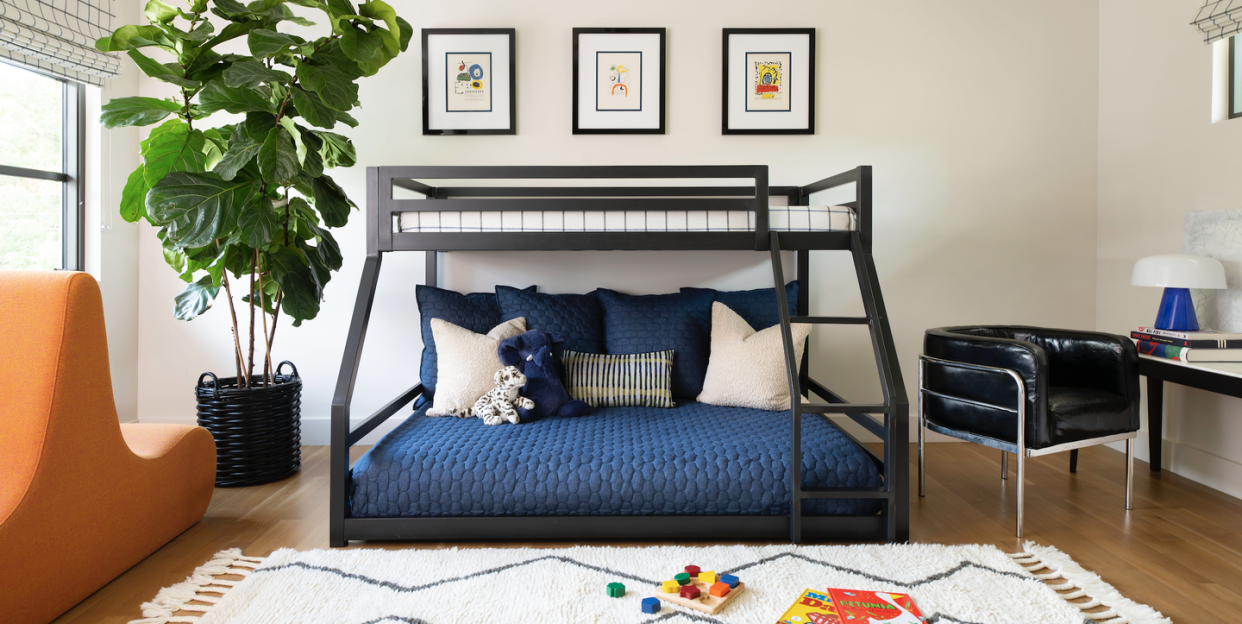How to Create a Sensory-Friendly Bedroom for a Kid with Special Needs

All parents know (or have been told again and again by their pediatrician, friends, and the internet) that a consistent nighttime routine is the most important part of your child’s sleep health. But did you know that a sensory-friendly bedroom can be as equally important? If you have a child who has difficulty settling down, staying asleep, or waking up naturally, a sensory-friendly bedroom can help. The ability to self-soothe and self-regulate can make a world of difference at bedtime.
Sleep issues are extremely common in children with special needs. "Creating a calming space will empower your child to self-regulate however and whenever they need too—day or night," says Alescia Ford-Lanza, a licensed occupational therapist and founder of Adapt & Learn, LLC. "When 'breaks' and bedtime are set up in a positive way, you'll know that you’ve successfully designed a soothing place for your child to play, read and sleep."
Why not take a second look at your child’s bedroom to see if any tweaks can be made to help your child get a better night's sleep? These are Alescia’s must-have items to create a sensory-friendly bedroom:
● If your child’s room is near a busy street, the neighbor’s barking dog, or a busy hallway in your home, the stimulation can keep them awake. Consider a white noise machine near the bedroom door, or an iPhone/iPad app that is designed to elicit sleep-specific brain waves.
● Look at the texture of your child’s bedding. Breathable, soft fabrics are ideal—but your child’s favorite t-shirt can help clue you into what they find most comfortable. Also, consider bedding with prints your child will love, but not find overly stimulating.
● Heavier comforters, down-filled duvets, sleeping bags, or weighted blankets can help children experiencing sensory overload, anxiety, or stress, because the extra pressure can have a relaxing effect. Sometimes you can replicate this weight by adding a heavier quilt on top of existing bedding.
● If you have a child with sensory processing issues, light sensitivity is a common concern. Use table lamps that can be switched on and off easily. Dimmer switches can also aid in providing the perfect amount of light. Also consider blackout curtains to block strong sunlight, which might cause stress.
● Whether it’s a bed tent, corner tent, or a canopy over a pile of soft pillows, it is important to provide your child with a sensory-deprivation area with calming items like books, fidgets, and stuffed animals. This area becomes your child’s personal space to take breaks during the day or settle down right before bedtime.
● Clutter can trigger anxiety and overstimulation in almost anyone, whether or not they have autism. Keep the room organization simple with closed shelving and storage units so the room is clear of distractions come bedtime.
● We all love bright, fun paint colors for kids but sometimes those colors don't exactly promote calm and tranquility. If light and visual sensitivity is something your child experiences, consider a darker hue like gray, navy, or violet, as those colors absorb more light instead of reflecting it. Earthy tones of brown are a good choice, too.
● Lastly, aromatherapy can significantly enhance the room's effect. Certain scents can be very effective in relaxing the body and calming the brain. Most oils can be diffused in the air, diluted and applied to the body, or put in a child’s bath right before bedtime.
Carissa Tozzi is the co-founder of Wolf + Friends, the community and lifestyle platform for moms raising children with special needs.
Follow House Beautiful on Instagram.
You Might Also Like

